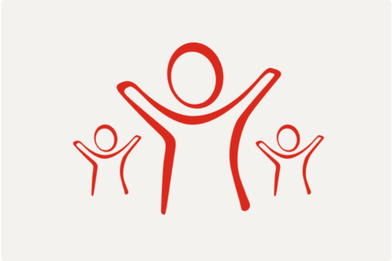Drought and conflict drive highest number of Somalis to Kenya refugee camps in a decade
NAIROBI, 11 November 2022 – Somalia’s devastating drought has led to the biggest movement of refugees into Kenya in over a decade, Save the Children said, with more than 20,000 Somalis - mostly women and children – arriving this year.
Hundreds of people are estimated to be arriving daily at the Dadaab refugee complex in search of food and shelter, having been driven from their homes by the worst drought in about 40 years, as well as ongoing conflict.
We stand side by side with children in the world's toughest places.
The Dadaab Emergency Coordination Task Team (DECTT) warned that the number of new refugees could rise by another 66,000 by April 2023 as Somalia teeters on the brink of famine, adding to pressure on already scarce resources available for humanitarian needs.
The Dadaab refugee complex was opened in 1991 to provide refuge to asylum seekers fleeing the civil war in Somalia. But in 2011, a second massive influx occurred with about 130,000 refugees arriving to flee famine in southern Somalia, which killed more than 260,000 people, more than half of whom were children aged under five.
Save the Children said this is the second time drought has pushed refugees from Somalia into the already overpopulated refugee complex, which houses about 233,000 refugees – more than three times the camp’s capacity. Dadaab is the third largest refugee complex in the world.
The child rights organisation said this renewed refugee movement is causing an unprecedented stretch on already limited resources. This is despite an inter-agency meeting in mid-October resolving to re-open an additional camp that closed three years ago, to settle the new asylum seekers
The Horn of Africa region is experiencing a catastrophic food crisis after four consecutive failed rainy seasons, which has been compounded by skyrocketing food prices due to rising food and fuel prices on international markets, driven partly by the war in Ukraine.
In Kenya, an estimated 4.35 million people – 9% of the population - are facing severe food shortages, while nearly 6.7 million people in Somalia - 41% of the population – are reported to be battling widespread food shortages, with child malnutrition on the rise and fears of famine mounting.
Yvonne Arunga, Save the Children Country Director for Kenya and Madagascar, said:
“We’re seeing a repeat of the devastating hunger crisis in 2011. The crippling drought in the Horn of Africa and extreme food shortages are pushing mothers to take desperate measures, including walking hundreds of kilometres to the Dadaab Refugee complex in Kenya, risking their children’s wellbeing and safety.
“We’re concerned that the unfolding crisis will roll back the progress made over the years, with the real risk that some families who had been resettled back in Somalia could be displaced for a second time.
“In Kenya and Somalia, a massive, sustained, and multi-sectoral scale up of support is needed now. Time has run out already for too many people, and we cannot afford to waste another moment when lives are at stake.
“We’re calling on the international community and donors to make funds available for vulnerable households, alternative care for unaccompanied minors, establishing child-friendly spaces where children can play and learn, and case management systems within the refugee camps and among communities facing severe hunger, including the host community.”
Save the Children has been working in the Dadaab refugee complex since 2006, running child protection and education programmes, and was pivotal in responding to the 2011 Horn of Africa drought. In 2022, the aid organisation has reached more than 16,000 people including more than 12,000 children through protection, education and cash assistance.
Outside the refugee camp, Save the Children is providing lifesaving assistance to children and their families in Turkana, Mandera, Wajir, and Garissa counties through integrated health, nutrition, food security, child protection, and education interventions. Save the Children teams have reached more than 514,000 people through screening and treatment for malnutrition, water trucking, rehabilitation of water points, and hygiene promotion this year.
ENDS
*******************************************************************************************************************
For further enquiries please contact:
- Samantha Halyk at Samantha.halyk@savethechildren.org (based in London)
- Delfhin Mugo at Delfhin.Mugo@savethechildren.org (based in Nairobi)
- Our media out of hours (BST) contact is media@savethechildren.org.uk / +44(0)7831 650409
.jpg-ch11029384.jpg/h6y2riw1t1308x50qu0mva17r0cn21ka.jpg?g=top&w=392&h=261&format=webp&itok=CjRzlLzV)


